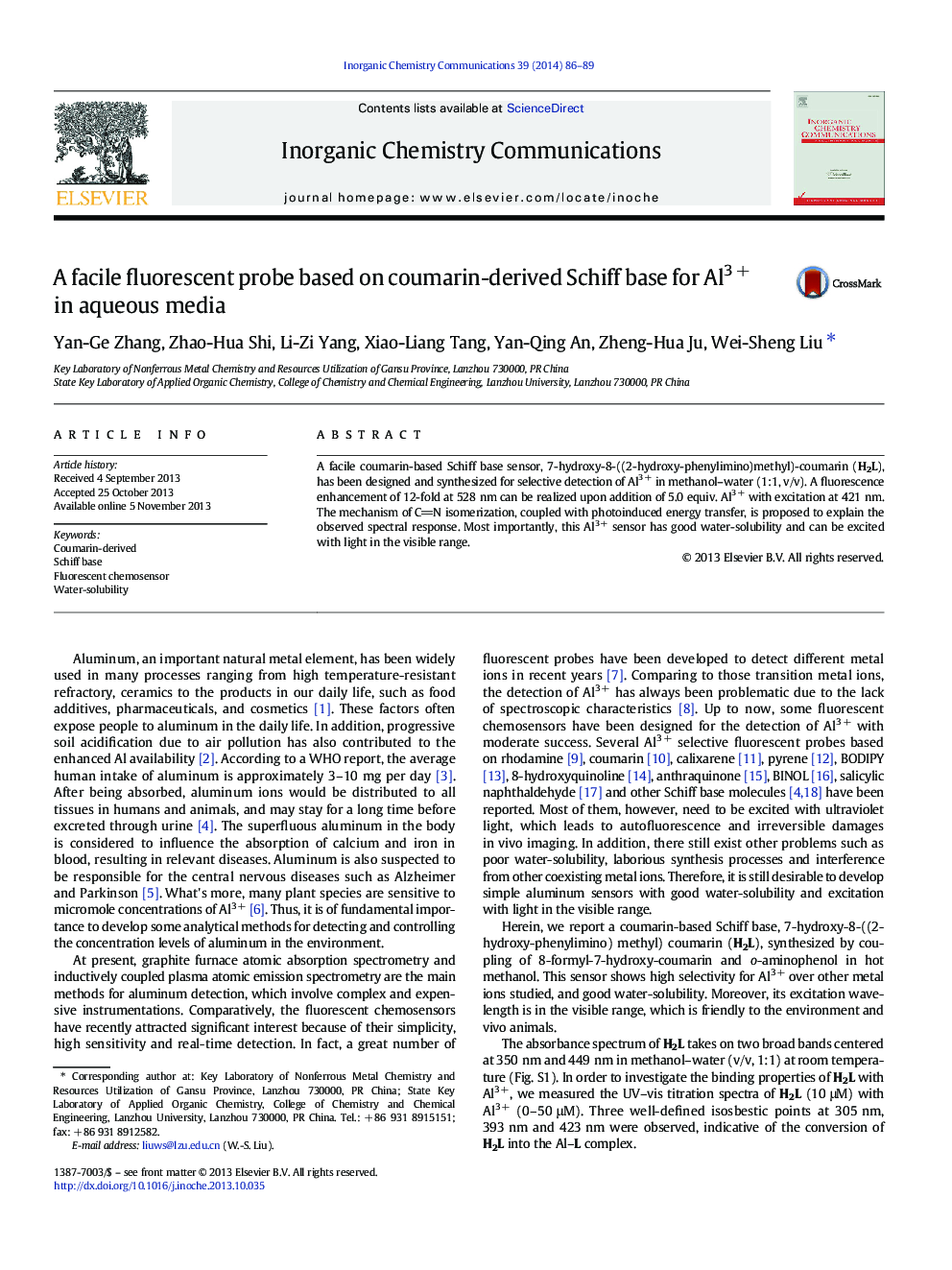| Article ID | Journal | Published Year | Pages | File Type |
|---|---|---|---|---|
| 1301691 | Inorganic Chemistry Communications | 2014 | 4 Pages |
•A simple fluorescent probe has been easily synthesized.•This sensor shows high selectivity towards Al3 + and good water-solubility.•The excitation and emission wavelengths are in the visible range.
A facile coumarin-based Schiff base sensor, 7-hydroxy-8-((2-hydroxy-phenylimino)methyl)-coumarin (H2L), has been designed and synthesized for selective detection of Al3 + in methanol–water (1:1, v/v). A fluorescence enhancement of 12-fold at 528 nm can be realized upon addition of 5.0 equiv. Al3 + with excitation at 421 nm. The mechanism of CN isomerization, coupled with photoinduced energy transfer, is proposed to explain the observed spectral response. Most importantly, this Al3 + sensor has good water-solubility and can be excited with light in the visible range.
Graphical abstractA new coumarin-based Schiff base that shows high selectivity for Al3 + in methanol–water (1:1, v/v) has been achieved.Figure optionsDownload full-size imageDownload as PowerPoint slide
